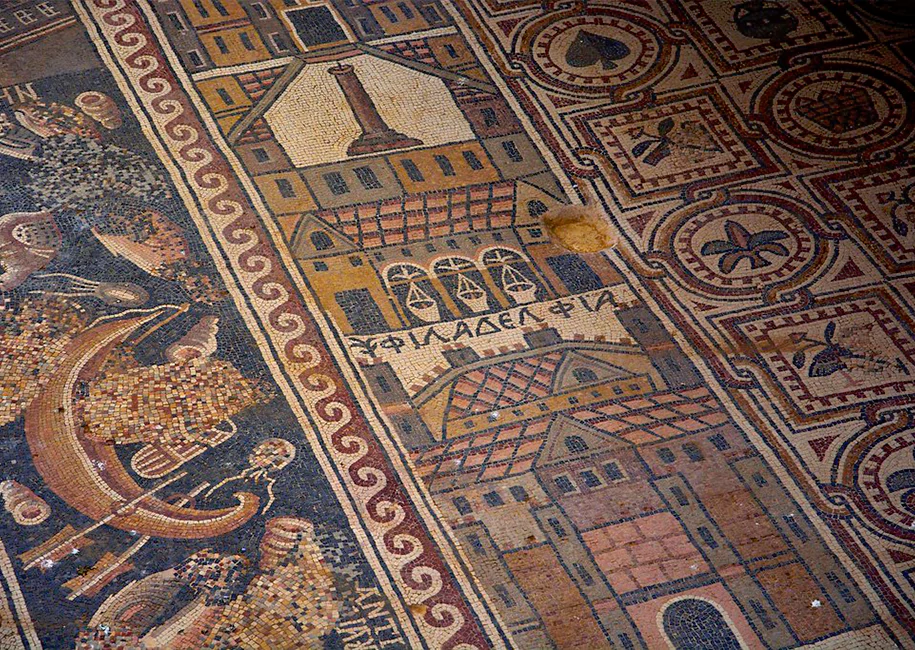
Um Ar Arasas or Um Al Arasas
The naming of the site with this name according to the language dictionaries is rooted, as it is derived from the verb (compact), i.e. placing two orders attached to each other, as the word (lead) means paint with lead, and these two names in the science of names refer to the tight walls. The ancient city's name "Castron Mayfa" was mentioned in a text in Greek within a mosaic dating back to the Umayyad period. The geographical name (Mayfa'a) was mentioned in Roman and Arab sources, and the historian Josephus in his book The Geographical Names (Onomastkon), when he mentioned the existence of a unit of the Roman army whose center was on the edge of the desert in Mayfa'a, as it was mentioned by the Arab geographer Al-Bakri as a village in Balqa from Syria. He knew since the dawn of Islam the place where Hanafi Zaid bin Amr bin Nawfal met with a monk foretold the coming of the Prophet Muhammad. Umm al-Rasas is the local Arabic name by which it was first known to western travelers from them who will be weighed in 1807, and Buckingham, which visited in 1816.

Umm Al-Rasas is located in the Giza district of the Capital Governorate, and the village climate is also considered desert, hot dry in summer, cold in winter. Snow falls on some days of the year.
Archaeological excavations that began in 1986 revealed a religious complex consisting of four churches, two churches that paved their floors with mosaics: the Church of St. Sergius, which was built in 586, and the Church of St. Stephen, which was built in the eighth century AD, and separated by a tiled open courtyard that was transformed with yet to the church by adding an apse in the western wall, now known as the Al Baha Church. He also revealed the church of Bishop Wael, which is located outside the wall of the fort, whose floors were covered with mosaics and dated to the year 586 AD.